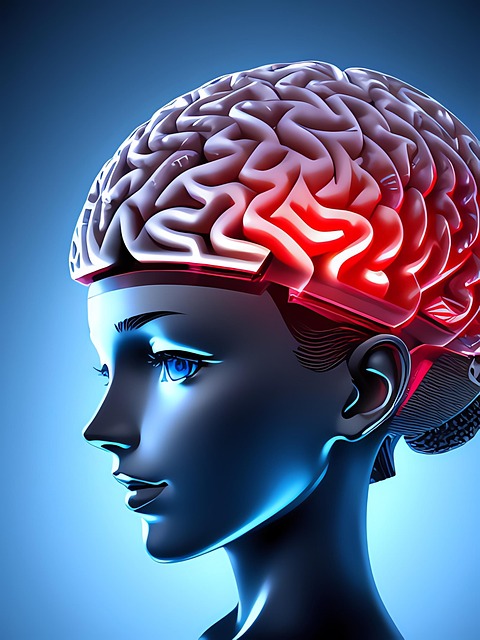
When working with scanned PDFs, distinguish between images and text for effective editing. Use PDF editors with OCR technology to extract text accurately and make documents searchable. Import scanned PDFs into robust editors for text improvement, error correction, and restructuring. Enhance readability through font adjustments, mind mapping, and brainstorming creative ideas. Save your final edited document by downloading it from the editor's menu. Facilitate teamwork by ensuring every team member downloads the updated PDF.
Learn how to transform blurry, scanned PDFs into crisp, editable documents with our step-by-step guide. We’ll walk you through understanding your scanned PDF, selecting the right editing software, importing it, enhancing text legibility, making adjustments, and finally saving and downloading your polished document. By following these simple steps, you’ll be able to efficiently edit scanned PDFs like a pro and ensure every detail is clear for future use. Download your perfectly edited documents with ease!
- Understand Your Scanned PDF
- Choose the Right Editing Software
- Import and Open in Editor
- Enhance Text Legibility
- Make Necessary Adjustments
- Save and Download Final Version
Understand Your Scanned PDF

When you scan a document and it saves as a PDF, you’re dealing with a unique digital entity that requires specific handling. A scanned PDF is essentially an image of your document, not a traditional text document. It’s important to understand this distinction early on in the editing process, as mathematical problem-solving skills will come into play when tweaking the file.
These PDFs often contain complex layouts, from images of handwritten notes to intricate tables and charts. This can make it challenging for digital media production tools to interpret and edit them accurately. However, with some patience and the right learning strategies, you can significantly enhance their readability. Start by examining the document’s structure: are there any text layers that can be edited? Can you identify areas where image quality might need enhancement? Once you’ve navigated these aspects, you’ll be better equipped to give us a call at programmatic coding languages for more advanced editing techniques if needed.
Choose the Right Editing Software

When it comes to editing scanned documents in PDF format, choosing the right software is paramount. Look for tools that specialize in PDF editing and offer features like OCR (Optical Character Recognition) technology, which enables accurate text extraction from images. This is crucial for converting your scanned document into a fully editable and searchable format. Many options are available, both free and paid, so consider your budget and specific needs.
For instance, some popular choices include Adobe Acrobat Pro, which provides advanced editing capabilities and integrates seamlessly with other Adobe products. Alternatively, online PDF editors like Smallpdf or Sejda offer convenient, browser-based solutions that allow you to download edited PDFs directly. If public speaking tips, cybersecurity awareness, or persuasive speech structure are part of your document editing process, these platforms can also help with organizing and structuring content for optimal presentation, ensuring a professional touch on all your PDF documents, including those related to the mind-body connection exploration anytime you visit us at mind-body connection exploration.
Import and Open in Editor

To begin editing a scanned document in PDF format, the first step is to download and import it into an advanced PDF editor. Many robust tools are readily available for this purpose, offering a range of features tailored for digital research techniques. These editors allow you to open and view scanned documents, transforming them from uneditable images into manipulatable text and layouts.
Popular choices often include cloud-based solutions, leveraging the benefits of cloud computing basics. They enable you to access your files from anywhere, collaborate with others, and store your work in a secure digital space. Once imported, you can use these editors’ powerful tools to enhance readability, correct errors, and even apply cognitive behavior therapy-like techniques to restructure content for clarity and coherence. Why not visit us at creative writing prompts anytime to explore more advanced digital editing capabilities?
Enhance Text Legibility

Making scanned documents more readable is often a necessary step when working with historical records or scientific notes. To enhance text legibility in PDF formats, consider utilizing various digital editing tools that offer text improvement features. These tools can help rectify faded or smudged text by employing advanced image processing algorithms. One popular method involves using optical character recognition (OCR) technology to analyze the document’s history analysis methods and convert images into machine-encoded text, making it easier to read and edit.
Moreover, digital editing software allows for adjustments to font size, spacing, and contrast, ensuring the text is crisp and clear. This process can be particularly useful when dealing with old documents or those that require a more modern aesthetic. Additionally, mind mapping for organization can assist in restructuring the content to improve overall readability. If you’re still facing challenges, give us a call at community engagement ideas; our team is here to help and can provide guidance on the best scientific method basics for optimizing your PDF documents.
Make Necessary Adjustments

After downloading your scanned document as a PDF, it’s time to make necessary adjustments to ensure optimal readability and clarity. Utilize digital research techniques to explore various PDF editing tools that offer features like crop, resize, and rotate functions. These simple yet effective tools can help you refine the layout of your document, ensuring important information stays visible and unobscured.
Through careful manipulation, you can also adjust contrast levels and text sharpness using built-in editing capabilities or specialized software. This process may involve some experimentation, but brainstorming creative ideas for presentation can make it more enjoyable. Remember, clear communication is key, so visit us at mathematical problem-solving anytime for additional tips on enhancing your scanned documents to meet your specific needs.
Save and Download Final Version

Once you’re satisfied with your edits and made all necessary adjustments, it’s time to save and download your final version. This step is crucial in the scientific method basics of document editing, ensuring that your work is preserved accurately. Simply click on the “File” menu in your PDF editor and select “Save As.” Choose a location where you want to store your updated document, and give it a suitable name for easy recognition.
Remember, effective collaboration is enhanced by using tools that facilitate sharing. If working in a team, ensure everyone has access to the final version by downloading it from your shared platform. Film analysis guides and collaborative team activities can benefit greatly from well-edited and properly distributed documents, so make sure to download yours promptly. Give us a call at time management skills if you need further assistance; we’re here to help!
Editing a scanned PDF can be streamlined by understanding your document, selecting suitable editing software like Adobe Acrobat or online tools, and following steps outlined in this guide. From enhancing text legibility to making adjustments, you’ll create a refined, downloadable version ready for sharing or printing.





